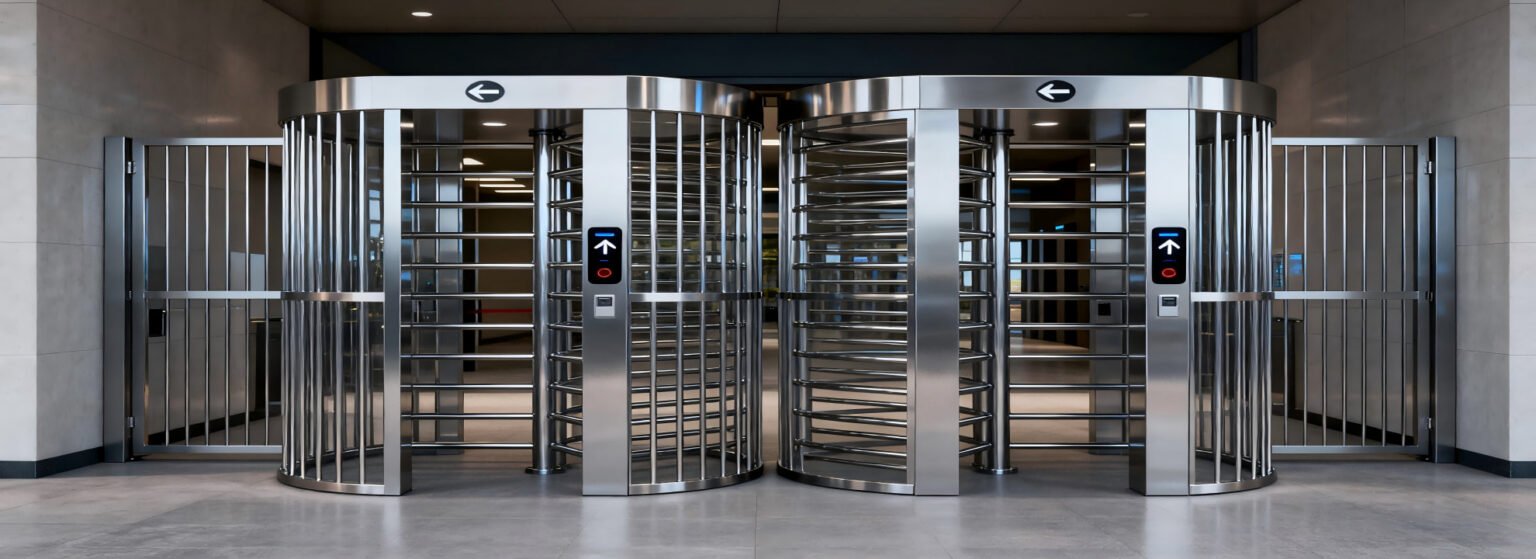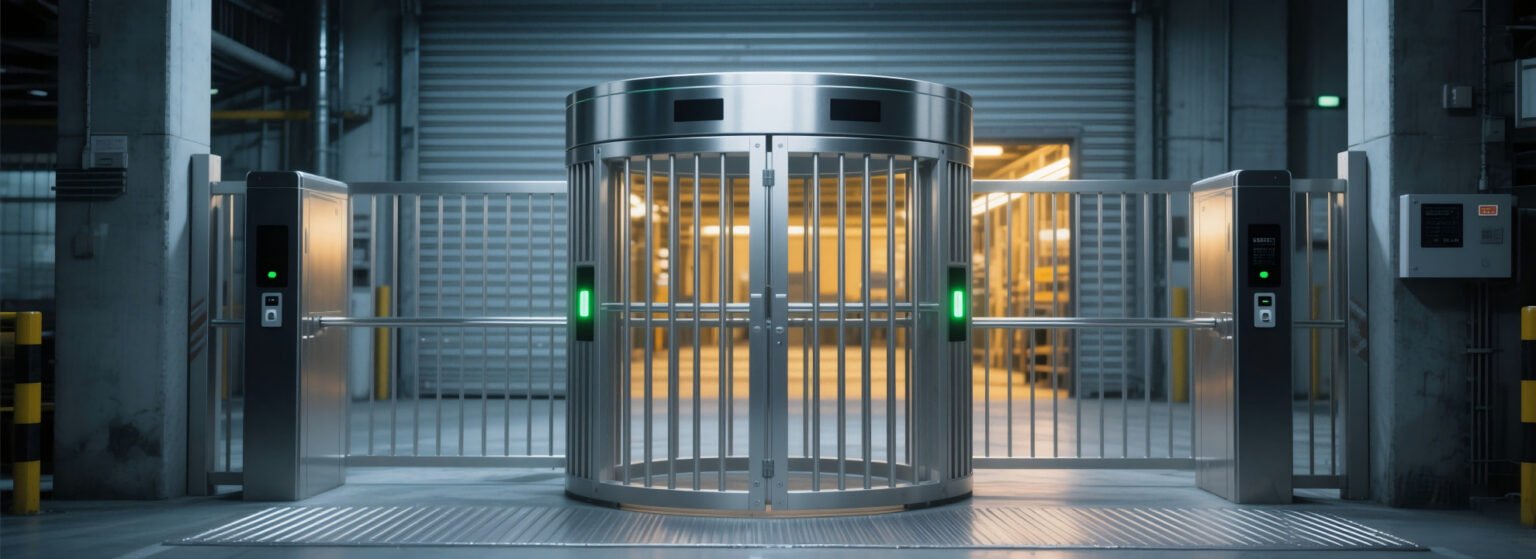Full Height Turnstiles
Introduction: Security Challenges in Critical Facilities
In today’s world, critical infrastructure such as energy plants, ports, data centers, and military installations faces increasing risks from both physical and cyber threats. Protecting these facilities is no longer limited to surveillance cameras and guards; instead, it requires multi-layered security systems capable of preventing unauthorized entry and ensuring absolute control over pedestrian access. Among the wide range of access control technologies available, full height turnstiles have emerged as one of the most reliable and uncompromising solutions.
Unlike speed gates or tripod turnstiles, which are often associated with semi-secure or corporate environments, full height turnstiles provide a fortress-like barrier that leaves no room for tailgating, climbing, or bypassing. They create a controlled entry point where every individual is authenticated before access is granted. For critical infrastructure, where even a single security breach can have devastating consequences, this level of protection is essential.
Security Attributes of Full Height Turnstiles
Full height turnstiles are purpose-built for maximum security, combining robust physical design with advanced access control integration. Their security features extend beyond appearance and provide layered protection against intrusion.
Anti-Climb Design
The defining characteristic of full height turnstiles is their towering structure, typically extending over 2 meters high. This makes it impossible for unauthorized individuals to climb over, unlike waist-high barriers that may be vulnerable to such attempts. The rotating cage-like framework completely encloses the passageway, ensuring that each entry is monitored and controlled.
Tailgating Prevention
Full height turnstiles restrict entry to one person at a time. The rotating mechanism, divided into narrow compartments, prevents multiple individuals from squeezing through together. Integrated with sensors and access systems, the design ensures that every passage corresponds to a valid credential. This minimizes the risk of piggybacking or forced entry, which is a major concern in sensitive facilities.
Multi-Factor Authentication Integration
These turnstiles are often paired with advanced access systems, such as biometric scanners, RFID cards, or PIN pads. Multi-factor authentication—combining two or more credentials—adds another layer of protection. For example, a nuclear facility may require both a fingerprint scan and a security badge before the turnstile unlocks. Such integrations ensure that only verified individuals gain entry.
Tamper and Vandal Resistance
Full height turnstiles are engineered with heavy-duty stainless steel or powder-coated steel that can withstand attempts of forced entry. Their frames resist cutting, drilling, or dismantling, ensuring long-term integrity in environments where physical sabotage is a risk. Additionally, lock systems are tamper-proof, preventing manipulation from outside the secured area.
Controlled Passage Flow
The mechanical design regulates pedestrian entry and exit in a controlled, one-directional manner. This flow management prevents sudden rushes or forced crowd movements, maintaining order even in high-security checkpoints. In environments like prisons or border crossings, this controlled flow is essential for maintaining safety and preventing escapes.
Through these attributes, full height turnstiles establish themselves as one of the strongest access control barriers, combining mechanical robustness with digital intelligence.

Reliability in Extreme Environments
Critical infrastructure is often located in challenging or exposed environments, from coastal ports to desert-based power plants. Full height turnstiles are designed to remain reliable even under extreme weather and operational stress.
All-Weather Resistance
Constructed from corrosion-resistant stainless steel or treated alloys, full height turnstiles endure rain, snow, saltwater exposure, and prolonged sunlight without degradation. Sealed bearings and weatherproof motors ensure continuous functionality, making them ideal for outdoor checkpoints such as oil refineries or border posts.
Temperature Resilience
These systems are engineered to operate in a wide temperature range, often from -40°C to +70°C. Whether deployed in Arctic research facilities or Middle Eastern deserts, full height turnstiles remain functional without mechanical failure. Heating or cooling modules can also be integrated to maintain operational stability.
Continuous Heavy-Duty Operation
Critical facilities often run 24/7 without downtime, and full height turnstiles are designed for such continuous operation. With reinforced drive mechanisms and industrial-grade components, they can handle millions of rotations per year without performance decline. This makes them suitable for ports, transit hubs, and secure industrial zones.
Impact Resistance and Structural Integrity
Full height turnstiles must withstand not only weather but also physical force. They are tested against impact, vibration, and heavy loads to ensure stability. For example, in prison environments or stadium perimeters, attempts to push or ram the turnstile will not compromise its function or security.
Low Maintenance Requirements
Despite their ruggedness, full height turnstiles are designed for minimal maintenance. Self-lubricating parts and simplified drive systems reduce downtime, ensuring that facilities do not face interruptions. Predictive maintenance systems, when paired with IoT sensors, allow operators to monitor performance remotely and detect issues before they escalate.
These qualities make full height turnstiles the most reliable choice for harsh and demanding environments where weaker barriers would quickly fail.

Policies, Standards, and Regulatory Compliance
The deployment of full height turnstiles in critical infrastructure is not only a matter of preference but also of compliance with international and national security regulations. As global concerns about terrorism, sabotage, and unauthorized access increase, governments and industry organizations have established strict standards that facilities must follow.
In the energy sector, for example, nuclear power plants are governed by the International Atomic Energy Agency (IAEA), which sets stringent requirements for physical protection systems. Full height turnstiles are frequently mandated at access points to ensure that every individual entering secure zones is verified and logged. Their role is not just functional but regulatory, as non-compliance can lead to severe penalties or operational shutdowns.
Similarly, in the transportation sector, agencies like the Transportation Security Administration (TSA) in the United States or the European Union Aviation Safety Agency (EASA) emphasize access control systems that prevent unauthorized entry into restricted areas. Full height turnstiles provide an auditable trail of every access event, helping operators comply with aviation and maritime security codes.
Cybersecurity regulations also influence physical security standards. In many data centers, compliance with ISO/IEC 27001 requires secure access to server rooms. Full height turnstiles, combined with biometric verification, help organizations meet these requirements by physically restricting unauthorized personnel from reaching sensitive equipment.
Moreover, regional standards, such as EN 1627 in Europe (resistance classes for intrusion prevention) or UL certifications in North America, push manufacturers to design turnstiles that can withstand physical attacks while integrating with electronic security systems. These certifications serve as benchmarks of quality and reliability, reassuring operators that their access systems are built to recognized global standards.
Ultimately, policies and compliance frameworks elevate the role of full height turnstiles beyond being a physical deterrent. They make them an integral part of regulated security infrastructures where accountability, auditability, and adherence to international protocols are non-negotiable.
Conclusion: The Indispensable Barrier for High-Security Facilities
Full height turnstiles stand apart in the access control industry as the most uncompromising solution for critical infrastructure protection. Their unique combination of anti-climb structure, tailgating prevention, and integration with advanced authentication ensures that every passage is secure and verifiable. Unlike other pedestrian control systems, they are engineered to perform reliably in extreme conditions and comply with the highest international standards.
As global threats become more complex and regulations more stringent, full height turnstiles will continue to play an essential role in safeguarding critical assets. They are not just barriers but intelligent, resilient, and regulatory-compliant gateways that protect some of the world’s most vital facilities. By blending durability, advanced technology, and compliance, full height turnstiles prove themselves indispensable in shaping the future of critical infrastructure security.
